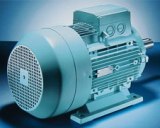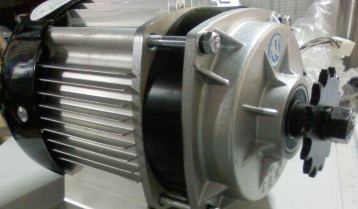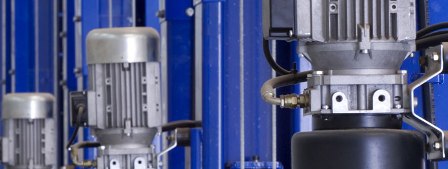DC motor selection
 The question of choosing DC motors most often arises in cases where the drive is variable and therefore the requirement to change the speed of rotation within certain limits is imposed on the electric motor.
The question of choosing DC motors most often arises in cases where the drive is variable and therefore the requirement to change the speed of rotation within certain limits is imposed on the electric motor.
DC motors are known to provide significantly greater speed control capabilities than AC motors. Although recently the use of electronic frequency converters in electric drive allows asynchronous motors to be used in AC drives as well. It is quite possible that in the near future variable frequency induction motors will almost completely replace DC motors.
For DC motors with parallel excitation, speed regulation within 1:3 or even more can be achieved simply and economically when the electric motors are powered by their own generators (for example, with a «generator - motor» system or a «start-up» system accords and counters») adjustment becomes possible in an even wider range (1: 10 and higher).When using quadratic systems, it is possible to bring the adjustment limits to 1: 150 and more.
DC also has some advantages for driving a shock load flywheel and in some cases for lifting applications where high starting torques and automatic speed control are required depending on the size of the load being lifted.
Considering the positive properties of DC motors, their serious disadvantages compared to AC motors should also be taken into account, namely:
a) the need for direct current sources, which requires special converting devices,
b) the high price of the electric motors and equipment themselves,
c) large size and weight,
d) great complexity of the operation.
Thus, both capital costs and operating costs for DC motors increase significantly, with the result that the use of the latter can be justified by the drive characteristics alone.

For variable (within wide limits) direct current drives, parallel-excitation motors are mainly used, and in some cases, when characteristic softening is required, mixed-excitation motors. Look: Direct current electric circuits and their characteristics
DC motors with series excitation are used only in complex lifting and transport devices.
Speed control of parallel-excited DC motors can be done either by varying the applied voltage or by varying the magnitude of the magnetic flux.Changing the voltage with a rheostat in the armature is uneconomical, since the losses in this case increase in proportion to the degree of regulation. Therefore, this control method is only admissible for individual drives with low power.
In this case, the control margin is not large, since excessive reduction in speed leads to unstable operation of the electric motor. The most economical is the adjustment obtained by changing the voltage supplied to the electric motor.
There are two known systems for managing this method.
-
with one alternator ("alternator - engine" system),
-
with two regulated generators (system «agreement - inclusion of a counter»).
Both systems equally allow changing the voltage at the terminals of the working electric motor in a wide range from 0 to UnomAnd therefore, in wide limits and smoothly change the speed of rotation. Some advantages of the first system should be considered the lower cost of both generators and switching equipment.
Regulation of the rotation speed of the electric motor direct current through parallel excitation by changing the magnetic flux is possible only "up", within no more than 1: 3 (less often 1: 4). If necessary, have wider regulation limits (1: 5, 1: 10), we need to move to the above voltage regulation systems. For low-power electric motors, mixed voltage and current control is used.
Usually, the control system, as well as the type and characteristics of the electric motors, are determined during the design of the electric drive and are, as a rule, subject to agreement with the electrical engineering enterprises.
The permissible overload of DC motors is determined by the operating conditions and is from 2 to 4 per torque, with the lower limit for parallel-excited motors and the upper limit for series-excited motors.
When choosing electric motors, we must strive to ensure that their number of revolutions matches the revolutions of the working machine. In this case, the most compact direct connection of the machine to the electric motor is possible and the power losses inevitable in the case of gears or flexible transmissions are eliminated.
DC motors of the normal series are produced for rated speeds of 1000, 1500 and 2000. Motors with speeds below 1000 are rarely used. For the same power, engines with higher revolutions have lower weight, dimensions and cost, as well as higher efficiency values.
Selection of DC motors for power is done in the same way as for AC motors. The choice of motor power should be made in accordance with the nature of the loads on the driven machine.

